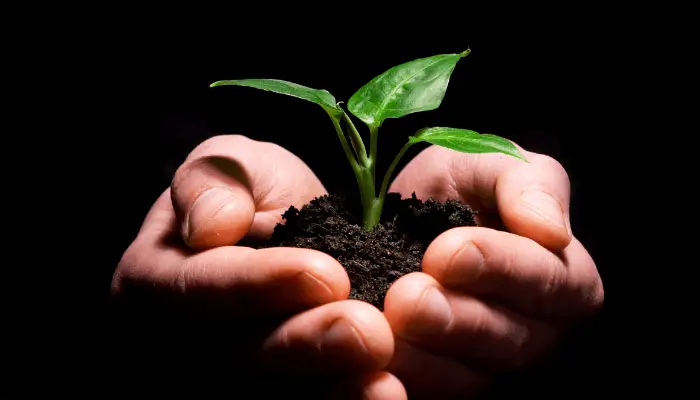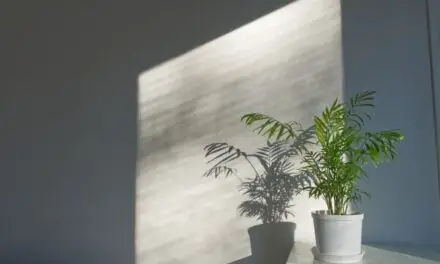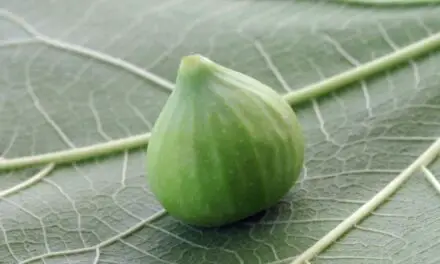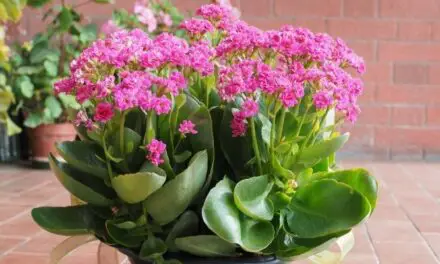Soil provides plants an anchor point so the wind doesn’t blow them over. It also provides them the water and nutrients they need to grow. But plants do not necessarily need soil to grow. They can grow perfectly well without soil when they are hydroponically farmed.
When plants are grown in hydroponic farms, they are usually grown without soil, using a mineral nutrient solution instead that completely does away with the need for soil.

In some ways, the way plants grow can seem like magic to us.
You plant a seed in the ground, water it regularly, and in just a short amount of time you’ll see the beginnings of growth poking out of the earth.
But how exactly does this process work and why do plants need soil to grow?
It might appear like a simple question, but the answer may be more complicated than you might think.
In fact, sometimes plants don’t need soil to grow at all.
Before we get into that, though, let’s talk about what soil does do for plants.
Table of Contents
The Purpose Of Soil
Soil essentially acts as an anchor point.
A plant’s roots grow down into it, holding the plant in place so that it can grow tall without danger of being torn out of the ground when a strong breeze comes along.
Those roots also act as a kind of feeding tube for plants.
They absorb water and nutrients from the ground through their roots, then use that combined with the energy they absorb from the sun to create food in a process known as photosynthesis.
That, of course, is something most people know.
What a lot of people don’t know, however, is that the soil in this situation is not necessarily essential.
The plants take water and nutrients from the soil, but the soil itself is just a conduit for those essential ingredients and a place for them to tether themselves.
If you can find a way to provide the water and nutrients they need and support the plant’s roots with something other than soil, plants can still grow.
This is called hydroponics, and it’s actually a large part of today’s agriculture industry, especially in areas of the world where growing plants the normal way is not so easy.
What Is Hydroponic Farming?
Hydroponic farming is a way to grow plants without the need for soil.
It can be done indoors or outdoors.
Typically, a commercial hydroponic farm looks like something out of a science fiction novel, a room full of tubes with plants growing from openings all along the length of them.
To make this happen, you mix the nutrients plants typically get from the soil–such as phosphorous, magnesium, and calcium–with water to create a nutrient-rich solution that gives the plants everything they need to grow.
For one subset of hydroponic farming, called aeroponics, this is all you need–just light, water, and nutrients.
Other kinds of hydroponics involve the use of a substance that allows the plant to anchor itself in a similar way to soil.
Some common substances used for this purpose include coconut fibers, peat moss, and even shredded paper.
What Is Hydroponics Used For?
For most hobbyist gardeners out there, a traditional garden with soil is perfectly fine to meet their needs, and if they decide to dabble in hydroponic farming, it might just be little more than a fun experiment.
But where hydroponics really shines is in its versatility. When you take away the need for soil, suddenly you can grow plants anywhere, no matter what time of year it is or what the climate in that part of the world is like.
Hydroponics allows for farming in the middle of a huge city, in the dead of winter, or deep in the desert.
And what’s more, plants grown in a hydroponic system typically produce higher yields than those grown in soil, while simultaneously using up fewer resources.
This is because in a hydroponic farm, growers can fit more plants in one space, and they can carefully control things like the pH of the water, the concentration of nutrients, and many other factors that help promote plant growth.
Plus, unlike with traditional growing, water that the plants don’t absorb is reused and sent back around, letting hydroponic farms use up to 10 times less water than normal farms.
Final Thoughts
While soil is an important part of the growing process for plants in traditional gardens and pots, it’s actually not as necessary as you might think.
The soil provides water, nutrients, and a place for the plant to anchor itself, but through hydroponics, we’ve discovered a way to provide all the ingredients needed for a healthy plant without the need for soil.




